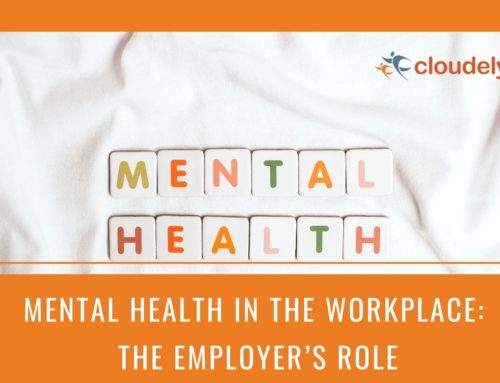Before the COVID crisis, companies and workers were pondering how to prepare themselves to face the wave of automation that is already at its tipping point. It was the coronavirus pandemic that added another facet to their challenge – adapting to unforeseen disruptions that impacted both the companies and workers alike.
Companies are now crafting talent strategies that include a lot more than allowing employees to work from home. On the other hand, employees, too, realized that full-time jobs, which were once considered to be the safest bet for making ends meet, are now no more promising. This created a boost to the temporary jobs or the gig economy, which was once an undermined arena.
Table of Contents
Is the impact of the pandemic all negative?
The pandemic created disruptions in all possible ways before we could understand what was happening. Hiring froze all across the world. Lakhs of jobs were cut in every industry. Sales and revenue slumped pushing companies to delve into their bitterest cost-cutting measures. But, a question here arises – is the impact solely negative?
The answer can be inarguably No. Why?
The crisis brought into limelight many features that were even far from realization earlier. The world realized that jobs and life would continue by adapting to change by leveraging the technology to its best.
- Work from home that was allowed only during emergencies is now the new normal. 99% of employees of IT giants across the world are working from home at the moment.
- The sudden loss of jobs pushed the talent pool towards freelancing and gig jobs profoundly, so much so that the gig economy is pacing 3 times than the traditional job industry.
- Companies are keen on employing gig workers and freelancers with an increased affinity. Around 80% of American companies are planning to use the services of freelance workers.
Organizations realized that reskilling and upskilling the existing workforce is essential to tackle any unforeseen perturbations. They are also laying an equal focus on the emotional and mental health of their employees compared to earlier.
Related: Hiring secrets from Cloudely Team
Gig economy post-COVID
Gig jobs are those that employ talented professionals on a per-project/hour basis. They offer flexibility and sometimes even higher pay for the work compared to the regular 9-5 jobs. With their no strings attached feature, gig jobs are increasingly gaining attention from both the workers and organizations.
The gig economy, in fact, has a lot more attractive features than the pay benefits. According to the 2020 Salesforce Talent Ecosystem Report, the pay benefit ranked at the bottom of the list of features. It is the freedom to be one’s own boss, the scope to take on diversified projects, ease to explore cross-boundary jobs, and freedom to live one’s lifestyle are the main driving factors for professionals to increasingly look for gig jobs.
On the other hand, corporates are making provisions for their gig workers too. According to industry experts:
- The rise in corporate gig jobs is as much as 12 percent when compared to the pre-COVID-19 times.
- Companies are planning to shift the full-time entry roles to the gig model.
- The rise in work from home gigs is as much as 115 percent during the lockdown.
How the gig workforce helps companies?
Companies are focusing on gig workers with enhanced regularity. Flexibility to hire and scale up as per the project needs that in turn help mitigate the costs is the main driving factor why companies are focusing on gig workers.
The scope to utilize the hidden talent pool that may not be found easily through regular job postings is also another attractive feature for companies.
By choosing professionals from a gig pool, companies can eliminate the costs of training and legal benefits which otherwise are mandatory for regular employees. They can also cut down on infrastructure costs and can enjoy many added benefits too.
Related: How to hire the best remote workers?
How nations are embracing the gig economy?
Most countries are now keen on leveraging the gig economy to the fullest potential. The recent change in dynamics in the gig workforce is pushing nations to make laws that benefit the gig workers.
California, for instance, witnessed a law that states that app-based companies such as Uber should designate their workers (of certain categories) as employees rather than as contractors.
In the UK, the plan to extend the government benefits to the self-employed and gig workers is underway. In similar lines, other countries are planning for loans and financial services at reduced interests for gig workers.
On the other hand, there shall also be challenges for agencies that deal with gig workers around the processes and regulations with this temporary workforce.
Industry experts in India, a home for around 3 million gig workers, believe that governments should initiate social security schemes and laws that add benefit to gig workers besides preserving the freedom that the working style offers.
At this moment where the gig model is still in infancy, companies, governments, and authorities should focus on its benefits for driving the economy and frame regulations and benefits that gig workers could enjoy along with their counterparts.
Challenges of gig jobs
As the world is slowly habituating to the new normal of gig jobs, work from home, and work from anywhere styles, there lies a bunch of challenges in dealing with the gig talent pool.
HR teams might have to plan additional strategies to keep up the commitment of the temporary workforce towards the organization. This might be solvable by making effective use of technology to offer virtual training, conduct meetings, and encourage customized benefits.
Most sectors related to IT and Corporate are finding ample talent to choose from gig forces. However, there is a dearth of professionals in other sectors like life sciences, for instance. While COVID-19 gave a push to the pharma industry, it is the lack of enough professionals to scale up the research and release of drugs that is worrying the industry giants.
Similarly, in the technology domain, though there is a demand for the professionals, a lack of supply is a worrisome aspect. A revelation from the 2020 Salesforce Talent Ecosystem Report indicates that Salesforce Technical Architects which witnessed the highest rate of growth across all the Salesforce roles, growing at 28% in established markets has only 1% of the overall talent supply, which is making it difficult to find them and hire.
A well-known challenge that gig workers face is finding new clients or regular work with promising pay. It is also a notable cause for financial insecurity that temporary workforce professionals experience.
A reliable platform equipped with the latest technology and that can bring both the employers and professionals under one umbrella may answer the challenges of both parties.
Necessity for a reliable platform
Digital solutions and technology innovations can offer an answer to tackle the challenges that companies are facing in employing gig workers productively.
Technology platforms that can bring the gig workers and their clients together are going to rule in the future. When blended with state of art technological prowess, they can play a crucial role in fast-tracking the recovery of the economy by offering innovative, timely, and flexible solutions.
Suren Reddy Katta, the Founder of Cloudely, a leading provider of recruitment solutions, believes that Artificial Intelligence can answer challenges the recruiters and candidates face in utilizing the gig talent pool to the maximum potential.
The company’s product, Gigminds – a recruiting solution, adeptly brings gig force as well as full-time professionals and companies together, by leveraging the power of automation and AI.
Future of gig jobs
Gig jobs mean a direct interaction between the customer and the client eliminating the middle costs. This implies companies and workers are both winners at the end of the day.
Also, professionals across the globe are increasingly craving to be their own bosses. As per the 2020 Salesforce Talent Ecosystem Report, only 8% of the survey group of independent professionals are keen to get back to a full-time role post-COVID-19. More than 50% of people voted to build their own business rather than joining a large firm.
With such entrepreneurial nature on the rise, gig jobs will arise to be the preferred option for professionals. On a positive note, with the world embracing gig jobs more than ever, the future of gig jobs is certainly gleaming.
Final Thoughts
The gig job trend has already emerged. After the pandemic, the world will be fully back to work. The question to contemplate is will the working style be the same and how prepared are we to adopt to the new normal.
About Cloudely
Cloudely is a recruitment solution partner that leverages the prowess of artificial intelligence to provide recruiters and companies their best match from talent in the industry. Cloudely helps companies scale faster and optimize the costs with its huge pool of on-demand gig and regular workforce.
To learn more how Cloudely can help your business, please visit the website. You can also reach the GigMinds team via Facebook, LinkedIn, or Twitter.












